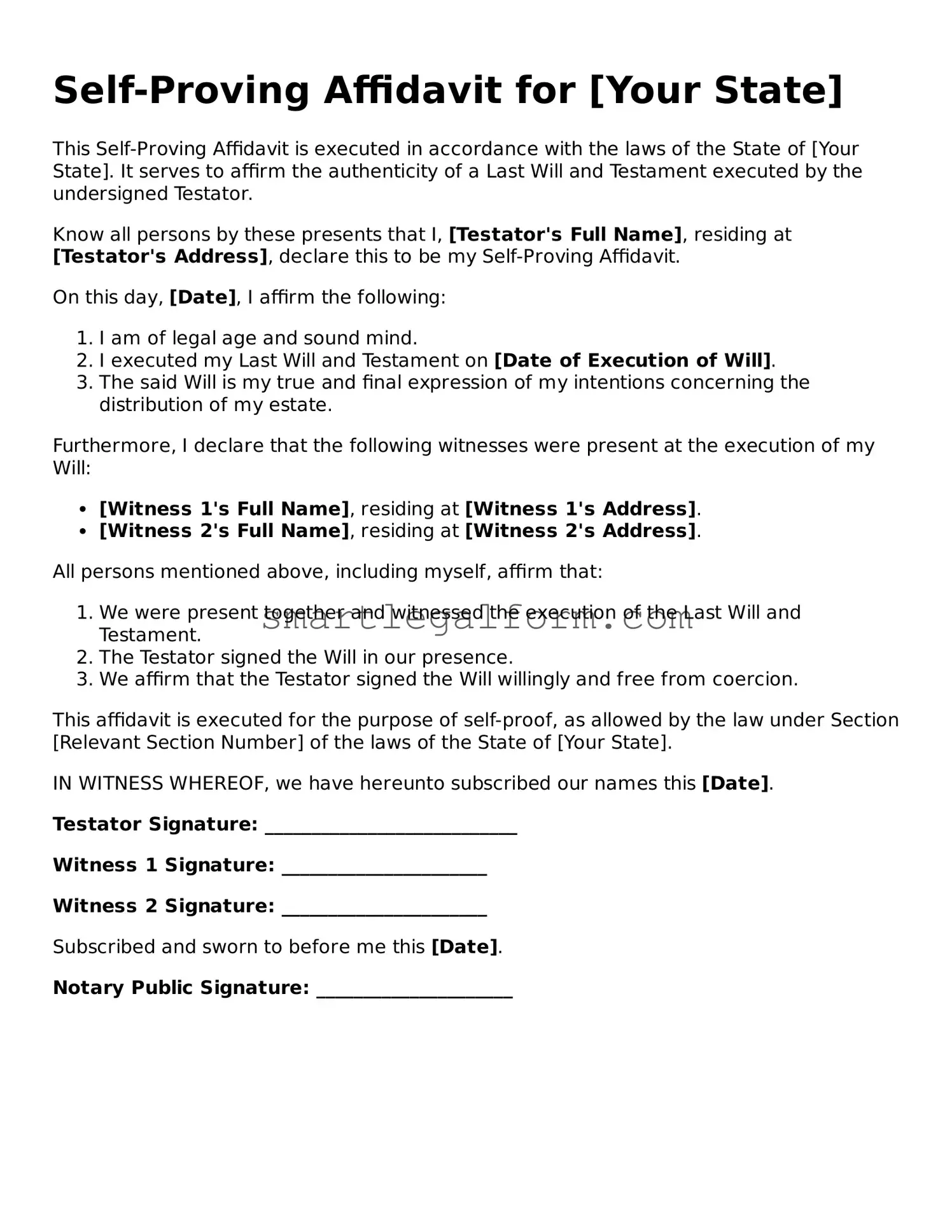Self-Proving Affidavit for [Your State]
This Self-Proving Affidavit is executed in accordance with the laws of the State of [Your State]. It serves to affirm the authenticity of a Last Will and Testament executed by the undersigned Testator.
Know all persons by these presents that I, [Testator's Full Name], residing at [Testator's Address], declare this to be my Self-Proving Affidavit.
On this day, [Date], I affirm the following:
- I am of legal age and sound mind.
- I executed my Last Will and Testament on [Date of Execution of Will].
- The said Will is my true and final expression of my intentions concerning the distribution of my estate.
Furthermore, I declare that the following witnesses were present at the execution of my Will:
- [Witness 1's Full Name], residing at [Witness 1's Address].
- [Witness 2's Full Name], residing at [Witness 2's Address].
All persons mentioned above, including myself, affirm that:
- We were present together and witnessed the execution of the Last Will and Testament.
- The Testator signed the Will in our presence.
- We affirm that the Testator signed the Will willingly and free from coercion.
This affidavit is executed for the purpose of self-proof, as allowed by the law under Section [Relevant Section Number] of the laws of the State of [Your State].
IN WITNESS WHEREOF, we have hereunto subscribed our names this [Date].
Testator Signature: ___________________________
Witness 1 Signature: ______________________
Witness 2 Signature: ______________________
Subscribed and sworn to before me this [Date].
Notary Public Signature: _____________________
